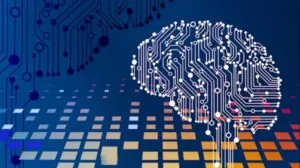Artificial Intelligence (AI) programs are computer systems designed to mimic human intelligence. How industries approach health care, finance and transportation tasks is rapidly changing.
Exploring AI’s potential in lab environments promises greater efficiency, reduced human error and faster advancements in areas like drug development and data analysis.
“Understanding AI’s role in labs can help people unlock groundbreaking innovations and redefine scientific research.”
The Current State of Lab Work
In traditional lab setups, humans are responsible for various tasks. These include data collection, experiment execution and result analysis. While skilled, humans can make errors and speed limits how much they can work. In addition, many lab tasks are repetitive and time-consuming, leading to potential inefficiencies.
There’s a growing need to bring automation and greater efficiency into the lab environment. Doing so streamlines processes and allows scientists to focus more on more complex tasks that require human intuition and creativity.
Enter AI — a powerful tool that can handle data analysis, automate routine tasks and even aid in complex decision-making processes. By integrating AI into labs, people can overcome traditional limitations and usher in a new era of scientific research.
Data Collection and Analysis
AI can significantly enhance data accuracy in labs by automating the collection process. Automated systems lessen the likelihood of human error, ensuring the data is both precise and consistent. These AI-powered tools can also collect data around the clock, vastly improving the speed and volume of data gathered.
Regarding data analysis, AI algorithms can process complex data sets much faster than humans. They can identify patterns, correlations and anomalies in seconds, which would otherwise take a human analyst hours or even days to uncover. This rapid analysis enables quicker decision-making and accelerates research and innovation.
Automation of Routine Tasks
Tasks like sample sorting, data entry and repetitive measurements are often time-consuming and monotonous in labs. These tasks slow the research process and tie up human resources that could help in complex problem-solving and analysis.
AI can take over these repetitive tasks with remarkable efficiency. Automation software can sort samples, manage data and carry out routine measurements without human intervention. It frees scientists and researchers to focus on more intellectually demanding aspects of their work, making the entire lab operation more productive and innovative.
Drug Discovery and Development
AI is a game-changer in the field of drug discovery. Traditional methods often take years of research and billions of dollars to create a single drug.
“AI algorithms can analyze vast databases of chemical compounds, biological data and clinical trials much faster, identifying potential drug candidates in a fraction of the time.”
Beyond just speeding up the process, AI can predict drug interactions and outcomes. It can analyze how different compounds will interact with target molecules in the body, estimating their effectiveness and potential side effects. This predictive ability accelerates drug development and increases the likelihood of finding more effective and safer medications.
Enhancing Safety Measures
Safety is a top priority in any lab setting, and AI can play a pivotal role here. It can continuously monitor temperature, chemical levels and equipment status using sensors and machine learning algorithms. If anything goes off track, researchers can receive alerts in real-time to prevent mishaps.
What sets AI apart is it can predict potential accidents before they happen. It analyzes historical data and recognizes patterns that can foresee issues like equipment failure or hazardous chemical interactions. This predictive capability allows for proactive measures, significantly reducing the likelihood of accidents and enhancing overall lab safety.
Scalability and Cost-Effectiveness
AI’s ability to automate repetitive tasks and analyze large data sets quickly makes lab processes more scalable. As the volume of work increases, researchers don’t necessarily need to hire more staff. Instead, their existing AI systems can handle the added workload, often with minor adjustments or upgrades. This scalability translates directly into cost-effectiveness.
Integrating AI can also result in significant savings. It can substantially lower operational costs by lessening the need for manual labor, minimizing errors and speeding up research timelines. Labs can redirect these savings to fund more innovative projects or invest in further technological advancements, making the lab more competitive and efficient in the long run.
Human-AI Collaboration
Technology excels at tasks that are repetitive, data-heavy or require rapid computations. Humans, on the other hand, bring creativity, intuition and ethical reasoning to the lab. Combining AI and human skills can create a more efficient and effective lab environment.
“For example, AI can handle data collection and initial analysis, while humans can interpret those results and strategize the next steps in research.”
A balanced approach leveraging AI and human capabilities is essential for maximizing lab productivity. By letting AI handle the tasks it’s best at, human researchers can focus on higher-level problem-solving and innovation. This synergistic relationship can lead to faster discoveries, more accurate results and a more rewarding work environment for everyone involved.
Ethical and Regulatory Considerations
Ethical concerns around AI in labs often center on data privacy and the potential for biased algorithms. For instance, if labs use it in medical research, there are questions about how patient data is used and protected. Additionally, if they train an AI system on biased data, it could produce skewed results, impacting the reliability and fairness of research outcomes.
Given these ethical complexities, it’s essential to establish clear regulatory frameworks. These guidelines can set standards for data usage, algorithmic transparency and accountability. Creating a regulated environment ensures researchers use AI responsibly, maintaining ethical integrity and public trust in scientific research.
The Road Ahead
AI’s impact in lab settings is nothing short of transformative. From accelerating drug discovery to enhancing safety measures, it is reshaping how research happens. It makes labs more efficient and cost-effective, allowing for groundbreaking innovations that might not have been possible otherwise.
As the technology continues to evolve, staying updated on AI’s role in labs is crucial for anyone involved in scientific research or tech development. With ongoing advancements, the synergy between AI and human expertise promises an even more revolutionary future for laboratories.










